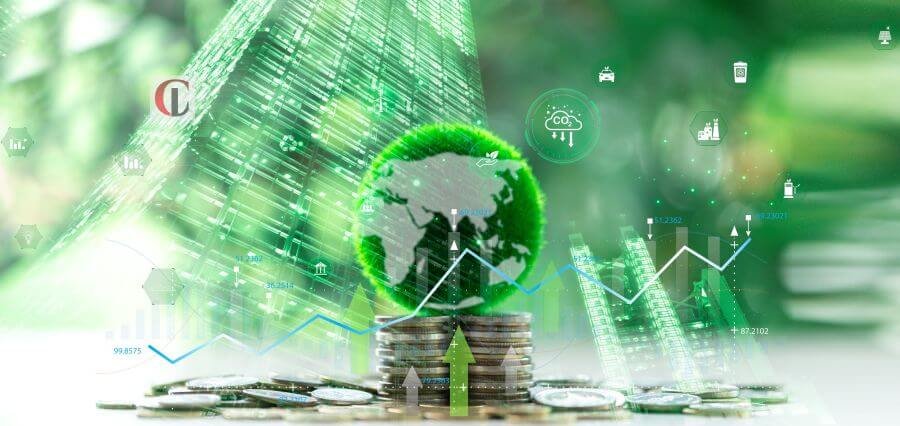With the world fighting the effects of global warming, the world of marketing is also being drastically altered. The transition to a climate-sensitive economy is not a phase; it is a trend in the way consumers and businesses think. Businesses are learning that success is in the long run if businesses adopt sustainable business, and the mode of marketing also has to be modified.
The article illustrates the key trends, challenges, and opportunities for marketing in this new environment.
The Rise of Sustainable Marketing
Sustainable marketing has emerged as a critical aspect of business practice. Customers increasingly happily pay higher prices for what are perceived as sustainable or green products. That demand implies calls for openness and honesty in commercial activity. Today’s companies are required to publish exact, confirmable information regarding their practices to become sustainable, thus gaining customer confidence and allegiance.
Principal Trends in Sustainable Marketing:
- Green Technologies: Green technology adoption is one of the biggest trends in sustainable marketing. Companies are using green technologies and materials to lower carbon footprints. This effort not only makes a brand look better but also gains a wider, environmentally conscious following.
- Authenticity and Transparency: Consumers of today demand authenticity from brands. Brands embracing transparency—through third-party authentication and end-to-end lifecycle sustainability reports—can establish deeper connections with consumers. It is a key trend for sustainable business in the long term as the future of marketing.
- Principles of Circular Economy: It is becoming more essential to apply principles of circular economy in marketing practice. Brands selling products for recycling, reuse, and longer life cycles appeal to eco-conscious customers. This points towards environmental value while making brands responsible and innovative, which are crucial in marketing in the future.
- Digital Engagement: Digital channels are leading the way for sustainability driving. Social media, blogs, and webinars enable companies to connect with consumers in real-time, educating them on sustainability topics and advocating green initiatives. This engagement fosters community based on common values of sustainability, further shaping the future of marketing.
- Local Focus: Local and hyper-local campaigns are gaining increasing attention as businesses look to minimize carbon footprints. Marketing local products not only supports community causes but also appeals to consumers who are concerned about sustainability, informing the marketing strategy of the future.
Challenges Ahead
While the trends in sustainable marketing look promising, a number of challenges persist:
- Greenwashing Issues: With increasingly more brands making sustainability a part of their operations, there is a threat of greenwashing—green market terminology for misleading environmental labels. Customers become increasingly skeptical of these assertions, and brands need to substantiate them.
- Regulatory Pressures: Governments all over the world are tightening up on environmental claims. Firms have to exercise caution with such regulations to avoid punishment while ensuring that their advertising communications are correct and supported.
- Consumer Behavior Gaps: While most consumers demonstrate that they prefer to buy sustainable brands, buying behavior lags behind. Closing this gap will demand effective marketing strategies that resonate with consumer values, and these will be essential to the future of marketing.
Opportunities for Innovation
The shift to a climate-aware economy offers many marketing innovation opportunities:
- Artificial Intelligence (AI): AI has the potential to drive richer customer experiences through personalized targeting, reaching those people most likely to engage with green products. This strategy minimizes wasteful marketing expenditure while maximizing campaign efficiency—a critical pillar of the future of marketing.
- Virtual Reality (VR) and Augmented Reality (AR): Companies can use VR and AR technology to build experiential encounters that teach customers about sustainable processes or show them the effect of living sustainably. VR and AR can advance interaction and awareness among customers, opening up possibilities for future developments.
- Eco-Labelling Expansion: The future will probably witness an extension of eco-labeling beyond mere badges to encompass detailed information regarding a product’s environmental impact. Smart labels and QR codes may offer direct links to in-depth life cycle analyses and carbon footprint information, further shaping the future of marketing strategies.
Conclusion
The marketing future in an environmentally aware economy is set for change as companies bring their plans into alignment with sustainability values. The emergence of sustainable marketing is a response to shifting consumer demands and the pressing need for business accountability in resolving environmental issues.
Those brands that celebrate authenticity, honesty, and emerging technologies will be best equipped to survive in this new environment. Going forward, it is evident that sustainability is no longer a choice but an imperative that will set the benchmarks for successful business in the future.
In short, as the world market keeps changing towards more environmental awareness, marketers have to follow suit—utilizing technology, being transparent, and being true to sustainable practices—to address the needs of a more conscious consumer base. The future of marketing is rosy for those who hold these values above all else.




